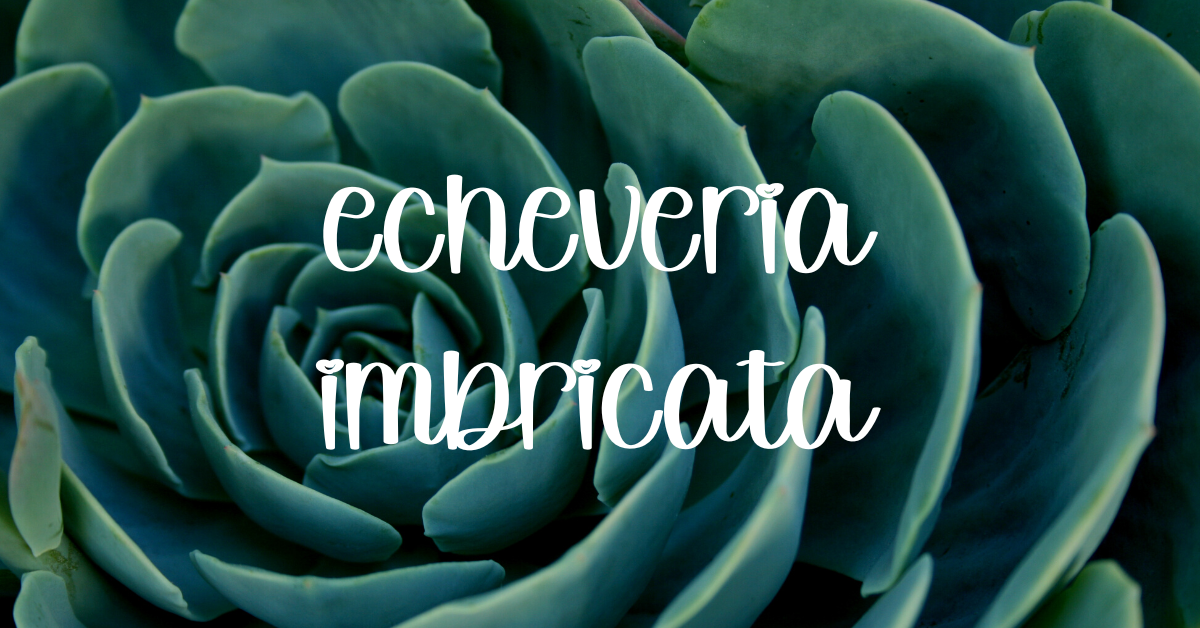
Echeveria ‘Imbricata’ is a beautiful succulent plant that belongs to the Crassulaceae family. Native to Mexico, this rosette-forming plant has powdery blue-green leaves that are symmetrically arranged and overlap one another, giving the plant its common name, “Blue Rose Echeveria”.
Cultivation
Echeveria ‘Imbricata’ is a low-maintenance plant that is perfect for any gardener, whether you’re a seasoned pro or just starting out. Here are some tips for successfully growing and cultivating Echeveria ‘Imbricata’:
Light and Temperature
Echeveria ‘Imbricata’ prefers bright light to full sun, with some protection from the hottest afternoon sun.
Learn more about the light needs of succulents like Echeveria ‘Imbricata’ here: How Much Light Do Succulents Need?
Soil and Potting
When planting in a pot, use a well-draining potting mix and a container with drainage holes. Avoid over-watering Echeveria ‘Imbricata’, which can lead to root rot, and under-watering, which can cause the leaves to wrinkle.
Soil is an integral part of making sure your succulents like Echeveria ‘Imbricata’ are healthy and happy. Read more here: The Best Potting Soil for Succulents: A Guide to Choosing the Right Mix
Watering and Fertilizing
Echeveria ‘Imbricata’ is drought-tolerant, which means that it needs infrequent watering. Feed sparingly with a balanced cactus or succulent fertilizer during the growing season.
Propagation
Propagation of Echeveria ‘Imbricata’ is most easily achieved by removing and rooting offsets as they appear at the base of the plant. It also can propagate via leaves and stem cuttings.
Learn how to propagate your Echeveria ‘Imbricata’ and more here: Propagating Succulents 4 Ways: The Best Guide Ever
Pests and Diseases
Echeveria ‘Imbricata’ is relatively disease and pest-free. Root rot is the most common problem when planted in poorly drained soils. In general, this plant should be kept dry and free of excess moisture to avoid fungal and bacterial infections.
Uses
Echeveria ‘Imbricata’ is commonly grown as a garden ornamental, in rock gardens, succulent gardens, or in container gardens. Its powdery blue-green leaves and symmetrical rosette form make it a great accent plant or a colorful and unique ground cover. Additionally, Echeveria ‘Imbricata’ is popular among succulent collectors because of its unique leaf patterns and vibrant color.
Conclusion
Echeveria ‘Imbricata’ is a beautiful, low-maintenance succulent that can add interest and color to any garden or indoor collection. With proper care and cultivation, it can be a long-lived and easy-to-grow addition to your collection. Remember to keep it dry and in a warm place, it can well grow in a drought-tolerant condition.

Growing Season:
Summer
Dormant Season:
Winter

Hardy to USDA Zone: 10a- Size: Over 8″ wide
- Foliage: Blue/Green
- Flower: Pink
Propagation: Stem cuttings, leaves, seed, offsets
Light: Full sun, bright shade
Water: Drench & Dry
Soil: Gritty, mostly inorganic, quickly draining

About Echeveria ‘Imbricata’
Echeveria ‘Imbricata’ is one of the oldest succulent hybrids having been created in 1874. Its parentage is thought to be E. secunda ‘Glauca’ x E. gibbiflora ‘Metallica’.
Another nickname for Echeveria ‘Imbricata’ is “Blue Rose” for obvious reasons. It is one of my very favorite succulents to collect. When stressed, its tips turn a beautiful blush pink color. Don’t you wish we got prettier when under stress?!


